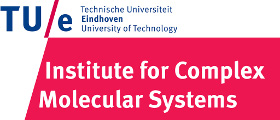Team:TU-Eindhoven/PublicSafety
From 2013.igem.org



Public and Environmental Safety

The E. coli K-12 and B strains are quite unlikely to represent any danger to animals, plants and micro-organisms. In our particular case, given the safeguards that we have implemented, our GMOs are still safe to the environment. Moreover all our protocols and experiments were carefully planned and executed. There was limited exposure of our genetically modified organisms to the outside environment due to the containment and safety rules followed while working at the bio-lab.
The most important aspect of our project was to modify E. coli by controlling part of its genome. Our modifications should not raise safety issues in terms of public safety, because according to the EPA the Escherichia coli K-12 we use within our project doesn't represent a direct threat to human health. The E. coli K-12 and B strains are not considered a human or animal pathogen. Furthermore, it has a poor ability to colonize the colon and generate infections. Moreover, it can easily be eliminated with ethanol.
Patient Safety
Considering the applications that our project could have in the near future, the main risk to the health of the patients would be the potential occurrence of DNA mutations on any part of our device. If e.g. the promoter or any other regulatory component engineered into the bacterium were to lose their functionality as result of a mutation, it is quite possible that the CEST proteins production would not be effective or that the safety mechanisms would be inactivated. The latter could cause major issues like sepsis. Even though mutations are quite unlikely to occur, it is still an important issue to consider.
At the stage where our project is currently at, no extra features are needed to ensure safety, our bacteria can be easily eliminated using ethanol and they are not yet used in humans and animals. However we are aware that the following stages would involve adding two main types of safety locks. Considering that we intend to use the CEST protein producing bacteria to generate a CEST contrast agent to be used in humans and animals, it is necessary to take into account that the outer membrane layer of the bacteria must be modified to avoid activating an immune system response. Moreover a killing mechanism must be implemented in order to eliminate the bacteria from the organism after their purpose has been fulfilled. The following paragraphs give a detailed explanation of these two elements that must be added to our bacteria in further stages to ensure that no safety issues arise from our project in the future.
In what refers to the mechanism to avoid the immune system , the bacteria should be altered so that they have a carbohydrate surface layer instead of chains. By applying this modification to the bacteria, they will be disguised and invisible to the immune system, allowing them to move forward into the hypoxic region.
The killing mechanism that we propose is the Thymidine kinase/Ganciclovir system, studied and used by previous iGEM teams as well as in researches found in the literature. KillMecID. Dey and G.R.D. Evans, Suicide Gene Therapy by Herpes Simplex Virus-1 Thymidine Kinase (HSV-TK). , 65-76 ()KillMecIIM. Aghi, C.M. Kramm, T.Chou, X.O. Breakefield, and E.A Chiocca, Synergistic Anticancer Effects of Ganciclovir/Thymidine Kinase and 5-Fluorocytosine/Cytosine Deaminase Gene Therapies. Journal of the National Cancer Institute 5, 370-380 (1998)KillMecIIIL.J. Bugaj and D.V. Schaffer, Bringing next-generation therapeutics to the clinic through synthetic biology. Current Opinion in Chemical Biology 16, 355-361 (2012) This system is part of the gene-directed enzyme prodrug therapies (GDEPT), widely used in oncology treatments.KillMecIVR.R.Drake, K. Pitlyk, R.A. McMasters, K.E. Mercer, H. Young,M.P. Moyer, Connexin-independent Ganciclovir-mediated killing conferred on bystander effect-resistant cell lines by a herpes simplex virus-thymidine kinase-expressing colon cell line. Molecular therapy: the journal of the American Society of Gene Therapy 2, 515-523 (2000)KillMecVS.M.Freeman, C.N. Abboud, K.A. Whartenby, C.H. Packman, D.S. Koeplin, F.L. Moolten, G.N. Abraham, The Bystander Effect : Tumor Regression When a Fraction of the Tumor Mass Is Genetically Modified.. In Vitro 53, 5274-5283 (1993) In this system, Ganciclovir is used as a prodrug. The prodrug is administrated into the systemic circulation and induces cell death in the cells that have previously been transfected with Herpes Simplex Virus Thymidine Kinase. The HSV-Thymidine Kinase phosphorylates Ganciclovir from Ganciclovir-monophosphate into Ganciclovir-diphosphate, and from the latter to Ganciclovir-triphosphate. The Ganciclovir-triphosphate is incorporated into the DNA, inhibiting the DNA synthesis and causing cell death. We made a pharmacokinetics model of the killing mechanism to illustrate the elimination of our bacteria from the human body.
References
 "
"



